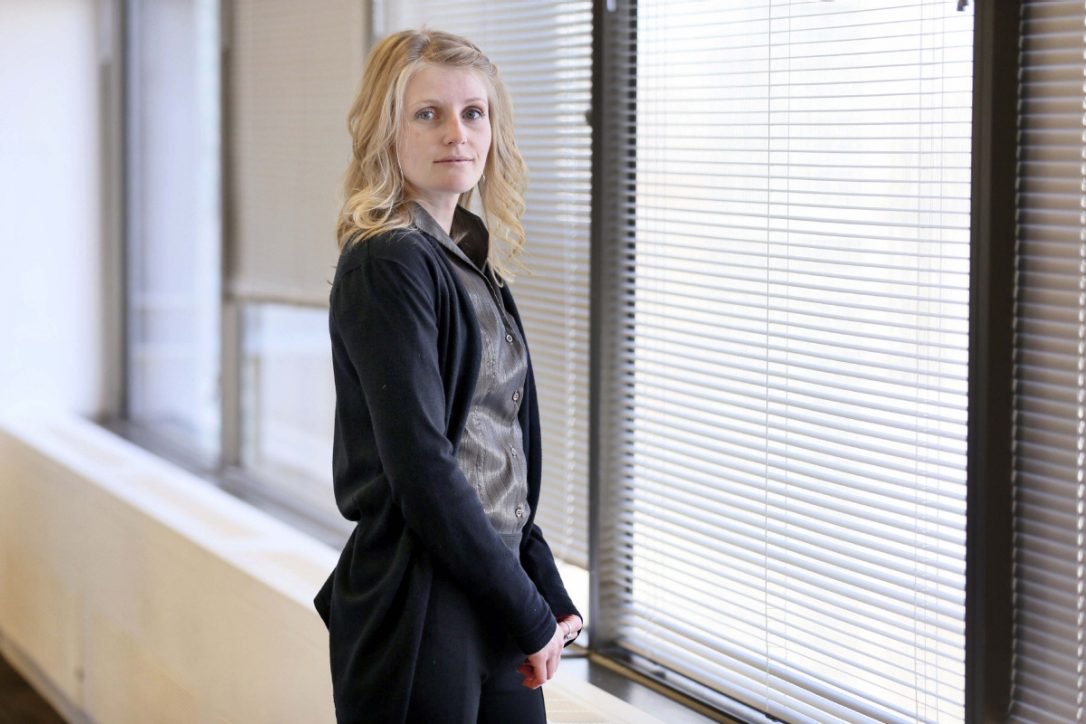Ontario Urged to Track Foster Kids after they Leave Care
If Ontario is serious about putting children at the centre of its new child welfare legislation, it must commit to track what happens to them when they become adults, says a new report.
And the government should use that information to improve the “consistently poor†outcomes faced by youth raised in the care of children’s aid societies, says the report’s author Jane Kovarikova, a former foster child and PhD candidate in political science at Western University.
“I understand that the government is focused on having a child-centred system, which is an excellent step in the right direction,†she said in an interview.
“But I would like it to be an evidence-based, or an outcome-based, child-centred system,†she said, “because if you don’t measure what’s happening to the youth you have been serving . . . how do you know if your policies or reforms are having any impact?â€
Limited Canadian and international research “overwhelmingly†shows people who grew up in foster or group home care experience low academic achievement, high rates of homelessness, early parenthood, unemployment, conflict with the law, mental health problems and loneliness, says the report.
“It is tempting to suggest that traumatic backgrounds and personal characteristics of youth are the ‘cause’ of these poor outcomes,†Kovarikova says in her report released Monday by Irwin Elman, Ontario’s Advocate for Children and Youth.
“However, the findings from this study suggest structural factors and professional practices inherent in the child protection system may contribute significantly to poor outcomes for youth aging out of care,†she concludes.
Since Ontario’s child protection system is designed without consideration of youth outcomes when they become adults, it is impossible to assess if the policies and services are working properly, she says.
Ontario should partner with academic institutions and other provinces to study youth over time after they leave the care of children’s aid, to track the problems they face and suggest ways to improve the system.
“An evidence-based child-protection system focused on youth outcomes is essential for effective intervention in the lives of vulnerable children and families,†the report says.
Elman praised Kovarikova’s report for its “potent combination of lived experience and academic rigour.
“It is the type of wisdom we simply have to be listening to in order to create change,†Elman said. “We are very proud to partner with Jane on this work.â€
Like many of her peers, Kovarikova left foster care in the Barrie area to live on her own at age 16 and dropped out of high school due to the financial and emotional stress. She later learned she could take upgrading courses at college so she could apply to university.
Kovarikova credits mentors in the education system for helping her achieve her academic dreams, which included completing a Master’s degree in human rights at the London School of Economics. But she knows her experiences are rare among youth who have grown up in foster care.
“This issue has great personal significance to me,†said Kovarikova, 33, who has worked as chief of staff to former Barrie MPP Rod Jackson and currently serves on the board of Simcoe-Muskoka Family Connexions, which provides child protection services for the area.
“It is my wish to raise the greatest public awareness possible on improving the child protection system so that every young person can achieve the best outcomes possible.â€
Ontario’s $2.5 billion annual child protection system serves about 17,000 children and youth a year, including about half who have been permanently removed from their families by children’s aid societies.
Every year, about 800 to 1,000 so-called Crown wards “age out†of care at either age 18 or 21. About 16 per cent of 16- and 17-year-olds live independently with minimal support at a time when most Canadian youth do not begin to live independently until well into their 20s, the report notes.
In Ontario, only 44 per cent of Crown wards complete high school compared to 81 per cent of students in the general population. Fewer pursue post-secondary education and of those who go to university, fewer finish their studies compared to their peers. A university graduate earns over $1 million more in a lifetime than someone who did not complete high school, the report says.
A British Columbia study found that as many as 90 per cent of youth in care were on welfare within six months of aging out. An American study found 56 per cent of former youth in care were living in poverty by age 23 and 24. And up to 30 per cent youth who had aged out of care reported being homeless, according to another U.S. study.
Youth in care are detained by police at higher rates than their peers despite the lack of evidence showing youth in foster care committed more frequent or severe crimes.
Early interaction with the criminal justice system is self-reinforcing, leading to later criminality, the report notes.
In B.C., researchers found women who grew up in foster care were four times more likely to become pregnant by age 19. And as many as 35 per cent of these women said the pregnancies were wanted.
One third of Ontario’s Crown wards have a mental health disorder, the majority report having special needs and half rely on psychotropic medication, the report says.
Many youth
submissions to the Ontario legislature in 2012 cited loneliness as an
inevitable outcome of growing up in foster care.
Comments
There are 0 comments on this post





